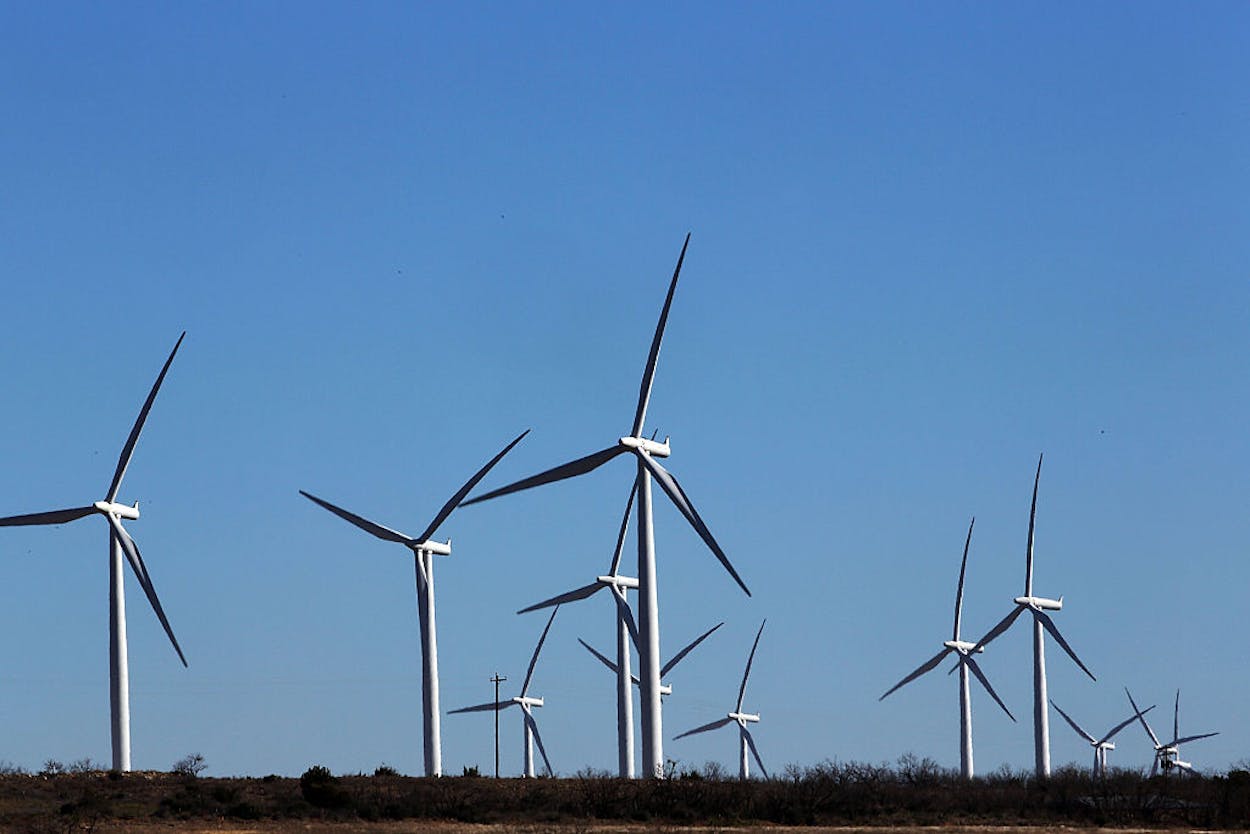Clean Line Energy Partners, much like myriad other companies based in Houston, is jockeying for the opportunity to provide energy to the rest of the country. “If you have gas in one area, you put it in a pipeline and ship it to where it’s needed,” says Sarah Bray, the Vice President of Communications at the company. “You put coal on a train and bring it to where it’s needed, delivering it to a market and it goes through the local utility grid. That’s kind of our business model.”
But Bray isn’t talking about oil and gas, or any of the fossil fuels that have helped build Houston’s reputation as the energy capital of the world. She’s talking about renewable energy: abundant, cheap, and untapped wind power in the United States. To transport it, Clean Line has proposed building five transmission lines—three in the Midwest and two in the Southwest—each hundreds of miles long. The company’s vision, Bray says, is to “go to the windiest areas where there’s no transmission, but there are wind farms waiting to be developed, and build power lines to the market where there’s need.”
Wind energy is geographically dispersed, and the best wind resources are typically far from the infrastructure of the existing grids: the plains of North Dakota or Iowa, for example, or western Kansas and Nebraska. “If there are no lines, wind [power] is difficult to get going because there’s nowhere for the power to go,” says Chris Pattison, the assistant director of wind energy education at Texas Tech’s National Wind Institute.
New transmission lines are the crucial link between wind energy and load centers, but companies often shy away from building them because of the cost. High-voltage lines are the most efficient type over long distances, running the costs up even further than more typical lower voltage lines. “You’re talking half a million dollars a mile, when the [wind farm] project is only $100 million itself,” Pattison estimates.
Clean Line is modeling its projects off a transmission line expansion that Texas’s grid operator, ERCOT, completed in 2014. Stretching from the Panhandle and Hill Country to Houston, Dallas, and San Antonio, the 3,600 miles of wiring, known as Competitive Renewable Energy Zones (CREZ), cost $7 billion to build. The construction bill was passed on to the state’s utility customers, who subsidized the cost with slightly higher electricity fees.
With more than 18,000 megawatts of installed wind capacity, much of it made possible by the increased transmission capacity, Texas leads the nation in wind energy development. “As soon as they [built CREZ], hundreds of wind projects went in, very quickly, and now they have a superhighway to connect to,” says Pattison.
Clean Line’s privately financed projects would cost just over $9 billion to construct, and the company isn’t passing the costs on to consumers. In theory, just as the new CREZ lines led to new wind farms, each transmission line project will spur new wind power plants, which will pay to use capacity on the newly constructed transmission lines. “Have you ever seen the movie Field of Dreams?” Pattison asks. “There’s a line in the movie that goes, ‘If you build it, they will come.’ That works for wind energy. [Wind farms] will come and connect.”
In the past eight years, however, Clean Line hasn’t actually completed any of its proposed projects. Building transmission lines across one state—even in energy-friendly Texas—would be difficult enough. And each of Clean Line’s projects crosses through multiple states and energy markets, which have separate permitting and review systems. “There isn’t a clear regulatory process to get it done. You have to take a state-by-state approach,” says Bray. That’s meant years-long waiting periods as public hearings and lawsuits from reluctant landowners drag on.
Plus, there is a changing landscape in Washington. “And in the meantime, things change. You go from the Obama administration to the Trump administration and priorities shift,” she adds. The Trump administration is decidedly more pro-coal than the previous administration, but, Bray points out, “President Trump is really pro-infrastructure. What we’re doing is building infrastructure.” The company has pledged to buy American manufactured components for its lines.
Hopefully, Rick Perry sees it that way, too. The former Texas governor, now the Secretary of Energy, has the power to undo one of Clean Line Energy’s major advancements. In 2016, Obama’s Secretary of Energy Ernest Moniz announced that the department would partner with the company to develop its Plains and Eastern Line, which would connect wind farms in the Texas Panhandle and Oklahoma to markets in Tennessee. The Department of Energy’s approval allowed the company to build its line through the state of Arkansas, where regulatory agencies had initially rejected the proposed line.
If Perry pulls support from the project—as Arkansas lawmakers’ have requested—Clean Line would have to reapply for approval from the state’s public utility commission, starting another years-long process with no ultimate guarantee. And as for the redundant electric grid reliability study that Perry commissioned, Bray says the company is “keeping an eye on it, but not worried about it.” The study, which has not been released yet, was conducted by a fossil fuel think-tank. Most analysts believe the purpose of the study is to find evidence implicating renewable energy in the slow decline of coal power plants. If so, it would only undermine Clean Line Energy’s limited progress.
Even so, Bray says she’s optimistic about working with the former Texas governor. “He’s seen first hand the benefits of wind energy and how it can bring jobs and economic growth in rural areas,” she says. “We think that’s a good thing.
- More About:
- Energy






